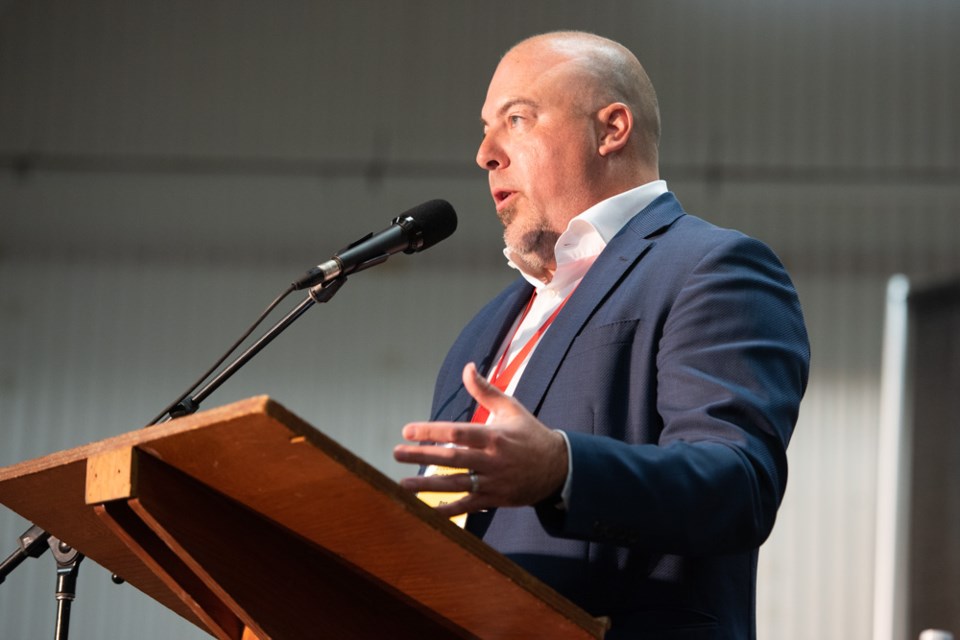A major glut in the supply of oil led to oil prices tanking into negative territory, and the result will be a major shutdown of oil production as the lockdowns for the COVID-19 pandemic have severely cut into consumption.
Weyburn oilman Dan Cugnet explained that the negative oil price on April 21 reflected the negative pricing that was already being experienced by oil producers.
The West Texas Intermediate price dipped to -$37 a barrel on April 21, and by the next day rose back up to around $10 a barrel.
“We’ve been in negative pricing before WTI went negative,” said Cugnet, noting the price reflects futures contracts, in this case for the end of May.
According to a report by the Reuters news agency, the major oil hub at Cushing, Oklahoma was nearing capacity (about 73 million barrels of crude oil) with more oil on the way, and this caused traders to panic and send the oil price crashing to the negative for the first time ever.
The oil hub at Cushing feeds the major oil refineries on the Gulf Coast, but the world demand for oil and gas products has gone down by at least 30 per cent, causing a major backup in oil supplies, even with the promised cut in production by OPEC recently.
“A barrel of oil from southeast Saskatchewan is bought and sold 20 times before it reaches the refineries in Texas,” Cugnet explained, pointing out that the futures contracts were oversold and the surplus has filled up all of the capacity available.
The result is many companies are shutting in production because they can’t sell any more crude oil at this point, and once the restrictions for COVID-19 are lifted, it will take a long time for demand to grow again and start using up the surplus oil supplies, said Cugnet, adding part of the problem is nobody has any idea how long the lockdowns for COVID-19 are going to last, or if there will be a second wave of infections.
“For southeast Saskatchewan, I would expect little to no drilling going into Q2 and Q3 (second and third quarters). Drilling will be at a standstill, and they’re going to be shutting in,” he said, noting the oil companies will still have to pay property taxes even though there won’t be any production, and the government won’t get any royalties, which they depend on for their revenues.
This will mean, in turn, that a lot of oil company and service company employees aren’t working, and those dollars aren’t available for spending in the local economy, added Cugnet. “That’s just at the local level.”
There is a possibility once activity levels start returning to normal and demand rises again for oil and gas, the price of gas could spike really high because it takes time for oil companies to ramp up their activities and get the oil flowing again, said Cugnet.
Prior to the pandemic, worldwide oil demand was about 100 million barrels a day, and due to the lockdowns, that’s gone down to about 70 million barrels a day, but the refineries are still producing the 100 million barrels a day.
“The problem grows exponentially,” he said. “What happens when the demand is 95 million barrels but we can only produce 80 or 85 million barrels? We could see a major price shock the other way. It’s going to be very volatile and very chaotic.”
For the oil industry in Saskatchewan, they were already experiencing major hardships with a low oil price and the policies of a hostile Liberal government, which will still be in place when the economy tries to revive again after the COVID pandemic is done, he added.
What worries him and other oil producers in Saskatchewan is the question of whether any investors are going to come back to invest oil production here, or take their money elsewhere to a more business-friendly environment.
“That’s a real unknown. We had significant problems before this,” said Cugnet, adding that the provincial regulations have also been onerous for companies operating here.
“The province needs to do a lot better than they have been doing,” he said. “Things are never going to be back to normal. Whatever we think normal is will be completely different now. I don’t think society will go back to the way things were before.”
On a positive note, oil producers in the southeast have become very adept at operating lean, since prices tanked in 2014, making things very tough for the industry here ever since.
“We’re lean and efficient because of the environment we’ve been working in the last few years. For other producers, such as in the U.S., this is far more drastic for them,” he said. “The timing of how long this will be going is the great unknown.”




